Cave paintings are a type of parietal art (which category also includes petroglyphs, or engravings), found on the wall or ceilings of caves.
1 – Magura Cave
Magura Cave is located in the northwest of Bulgaria and contains a collection of cave paintings, painted with bat excrement that date from 8000-4000 years ago.
An excess of 700 paintings has been discovered in the large cave, depicting people dancing and hunting as well as a wide range of animals.
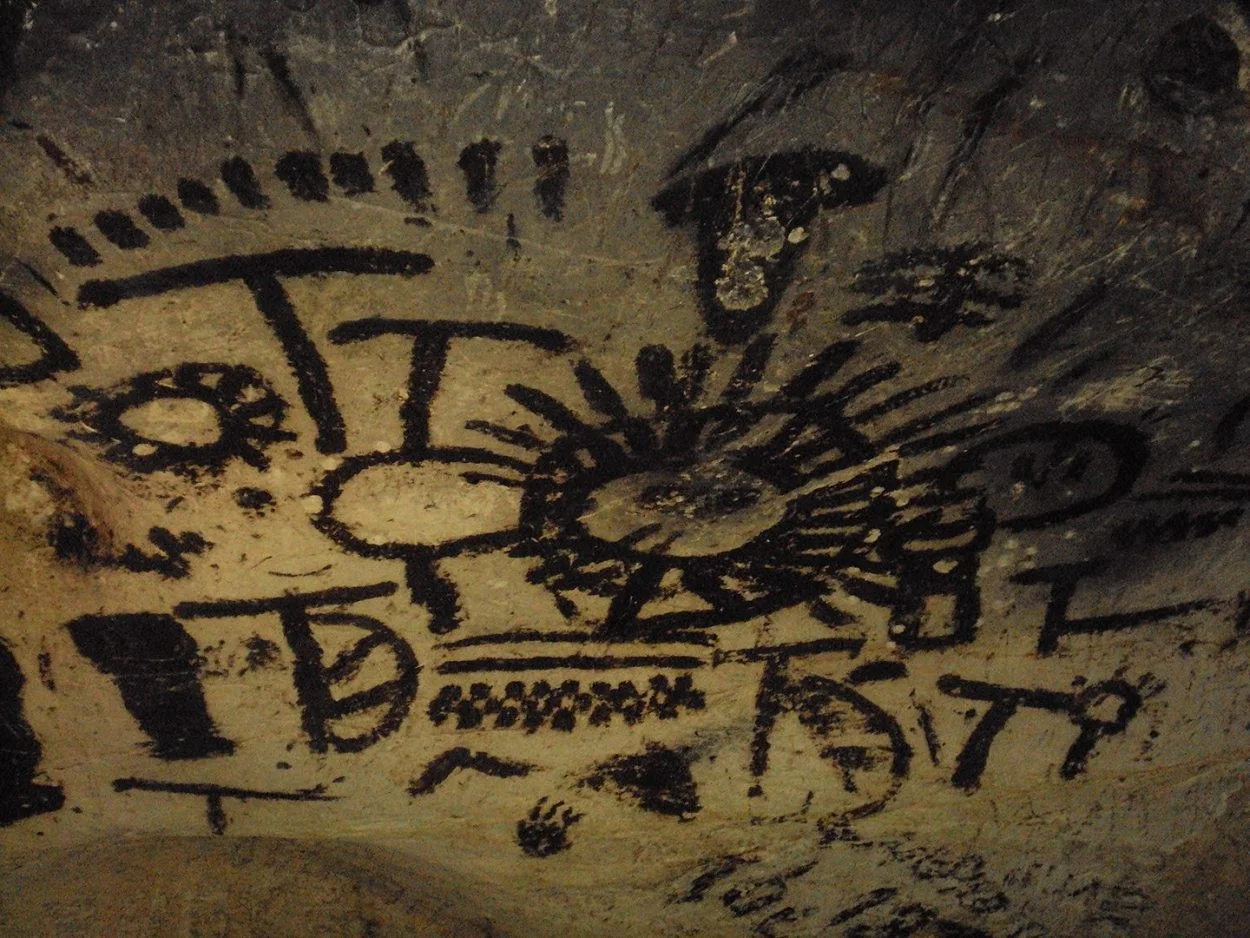
2 – Cueva de las Manos
Cueva de las Manos is located in Patagonia in the southern part of Argentina and contains cave paintings that were created between 13,000 and 9,000 years ago.
The cave’s name literally means ‘Cave of hands’ and was presented that name because of the hundreds of stenciled hands painted on the cave walls. The age of the paintings was calculated from the remains of bone-made pipes used for spraying the paint.
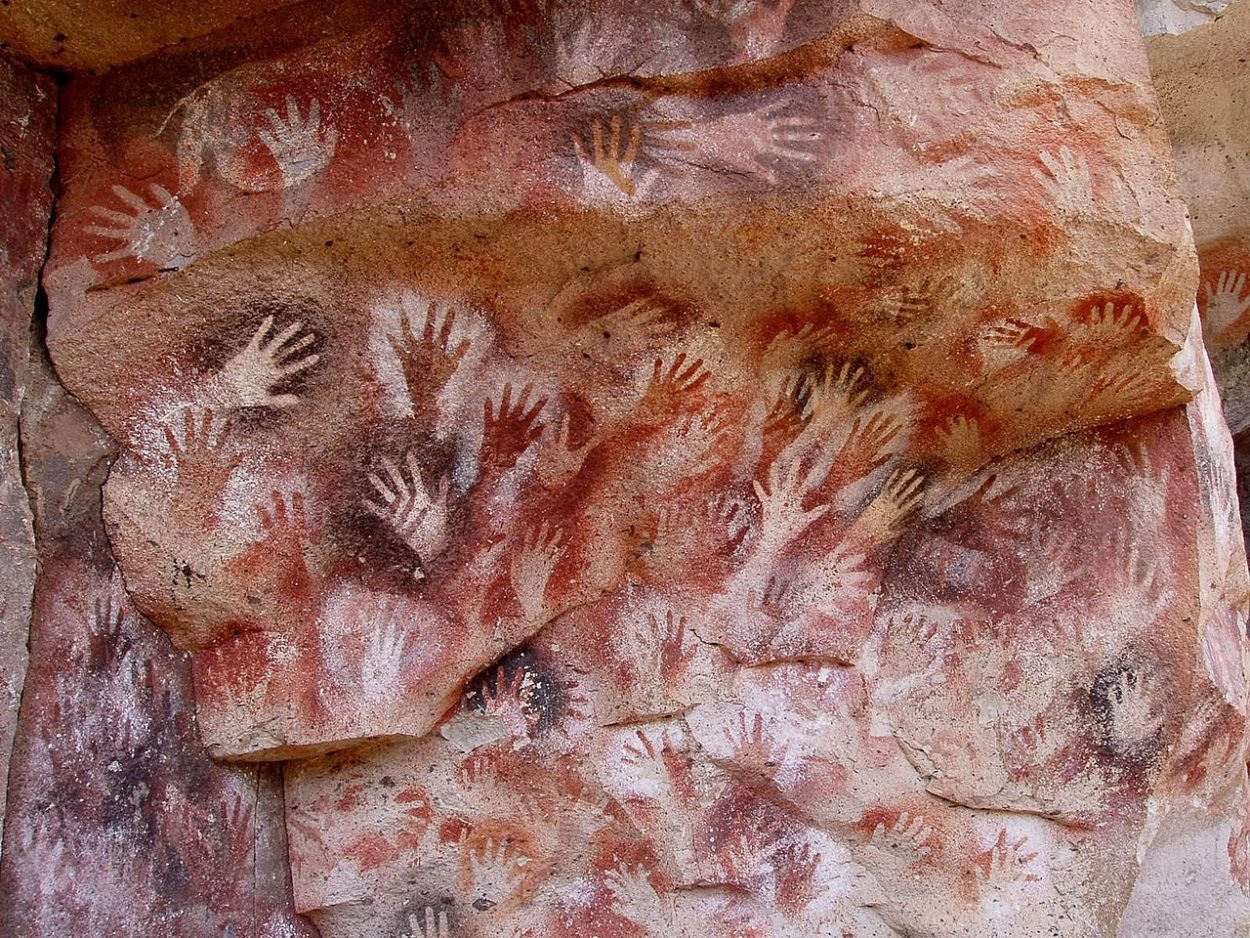
3 – Bhimbetka Rock Shelters
Bhimbetka is a collection of rock shelters, located in central India and contains over 600 paintings that span the prehistoric paleolithic and mesolithic periods, the oldest of which dates from at least 12,000 years.
The paintings depict the lives of the people who resided in the caves, as well as an array of animals that include tigers, lions, and crocodiles.
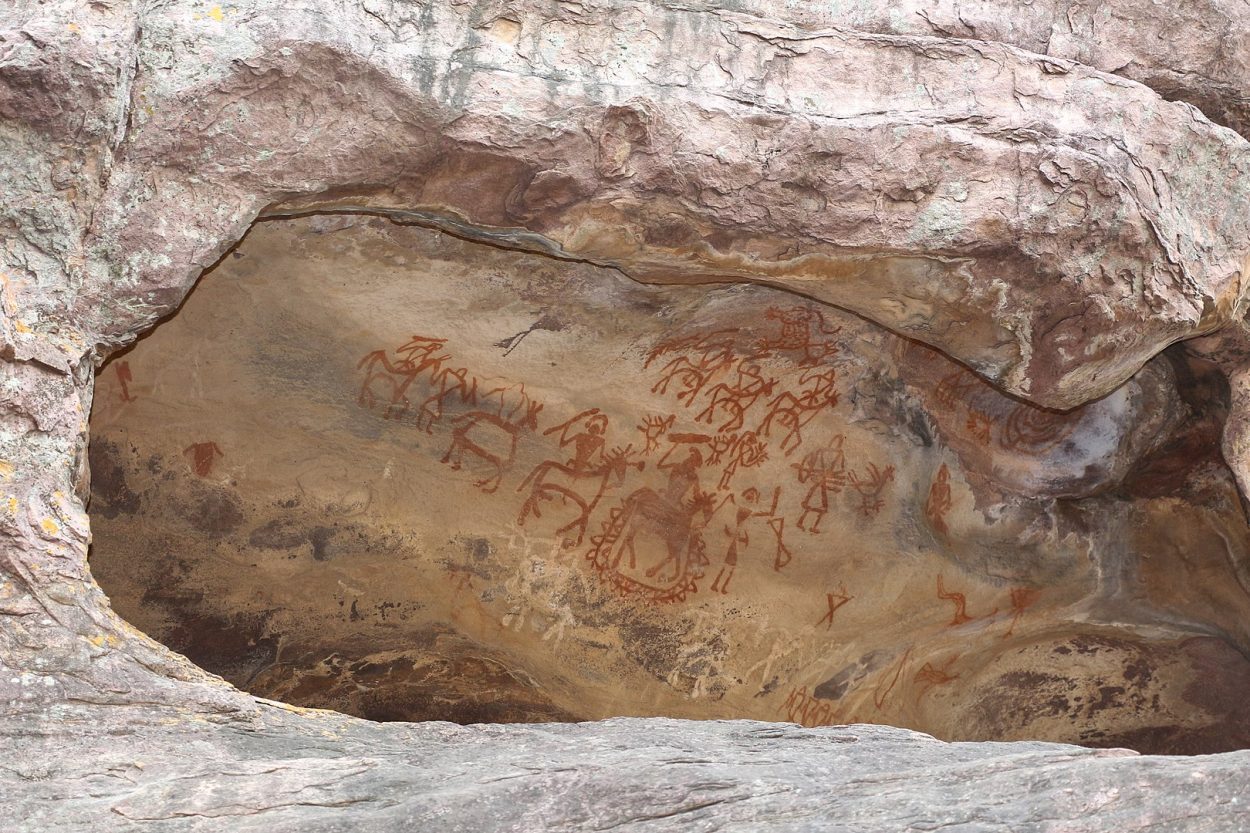
4 – Serra da Capivara
Serra da Capivara is a national park in Brazil which has the largest and the oldest concentration of prehistoric paintings in the Americas.
Rock shelters within the park were found to contain ancient paintings depicting animals and hunting. Whilst Stone tools found at Serra da Capivara date to as early as 22,000 years ago.
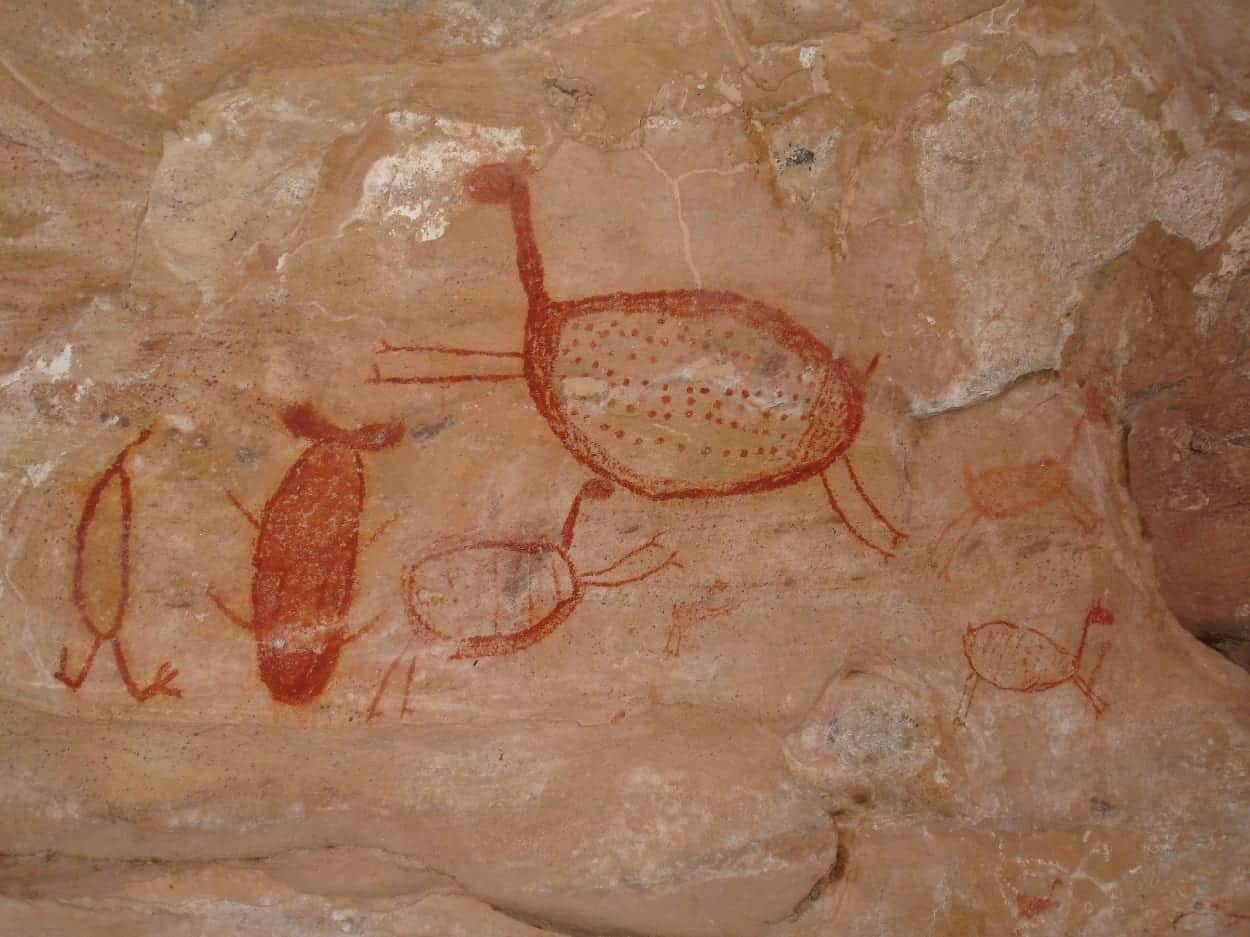
5 – Laas Gaal
Laas Geel are cave formations on the rural outskirts of Hargeisa, Somaliland, situated in the Woqooyi Galbeed region of the country. They contain some of the earliest known cave paintings in the Horn of Africa.
The paintings are very well preserved and show images of cows in ceremonial robes, humans, domesticated dogs and giraffes. Laas Geel’s rock art is estimated to date to somewhere between 5,000 and 7,000 years ago.
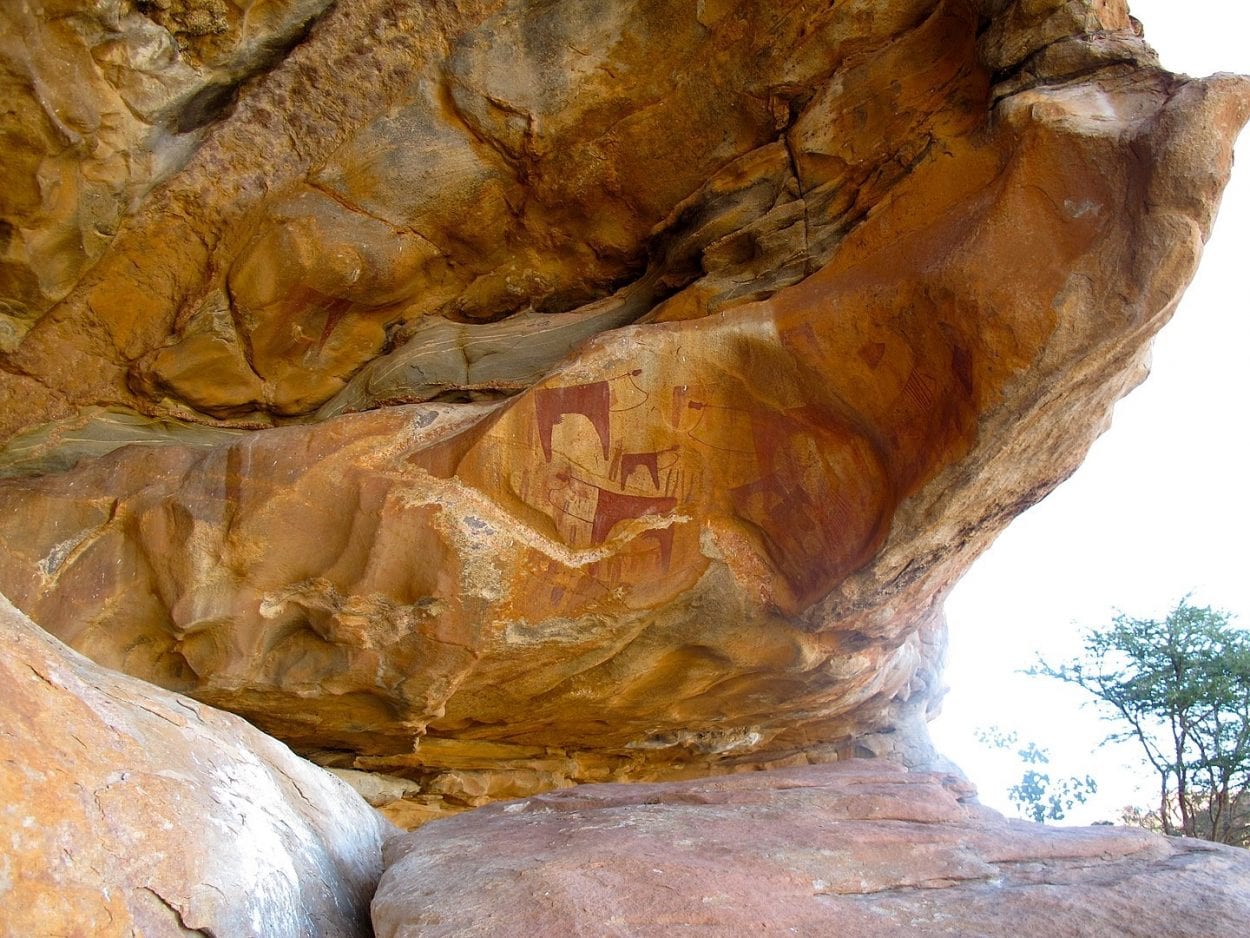
6 – Tadrart Acacus
Tadrart Acacus is a mountain range, located in the Sahara Desert of Western Libya that contains rock art dating from 14,000 years ago.
There are paintings and carvings of animals such as giraffes, elephants, ostriches and camels, but also of men and horses.
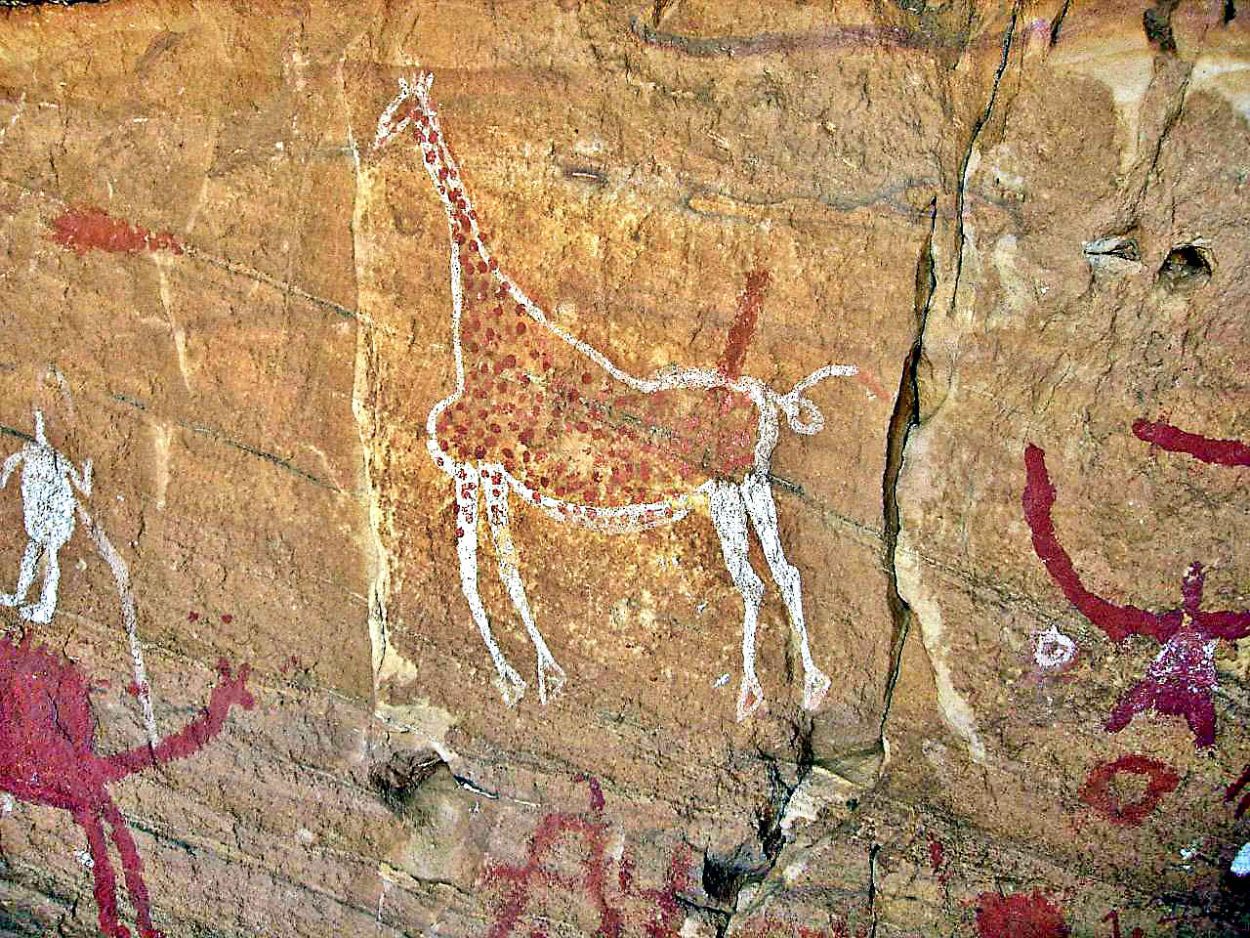
7 – Chauvet Cave
The Chauvet-Pont-d’Arc Cave in the Ardèche department of southern France is a cave that contains some of the best-preserved figurative cave paintings in the world.
The dates have been a matter of dispute but a study published in 2012 supports placing the art in the Aurignacian period, approximately 32,000–30,000 years BP. Hundreds of animal paintings have been cataloged, depicting at least 13 different species, including some rarely or never found in other ice age paintings. Rather than depicting only the familiar herbivores that predominate in Paleolithic cave art, i.e. horses, aurochs, mammoths, etc. The walls of the Chauvet Cave feature many predatory animals, e.g., cave lions, leopards, bears, and cave hyenas.
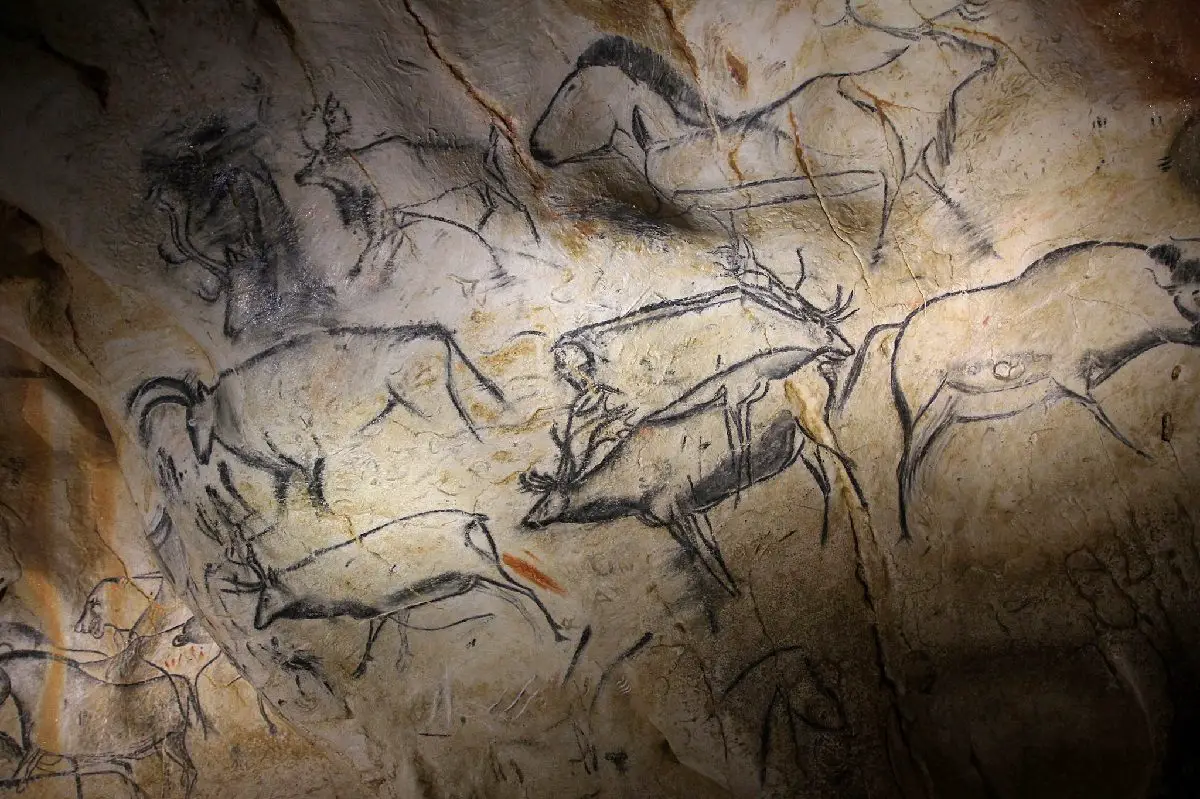
8 – Ubirr
Ubirr is a group of rock outcrops in the Kakadu National Park, a protected area in the Northern Territory of Australia. There several large rock overhangs that would have provided excellent shelter to Aboriginal people over thousands of years.
Some of the paintings are up to 20,000 years old and depict e barramundi, catfish, mullet, goanna, snake-necked turtle, pig-nosed turtle, rock-haunting ringtail possum, and wallaby and thylacine (Tasmanian tiger).
The Kakudu National Park contains a vast amount of Aboriginal rock paintings; over 5000 art sites have been discovered there. The Aboriginals not only painted the exterior of their subjects, but also the skeletons of some animals.
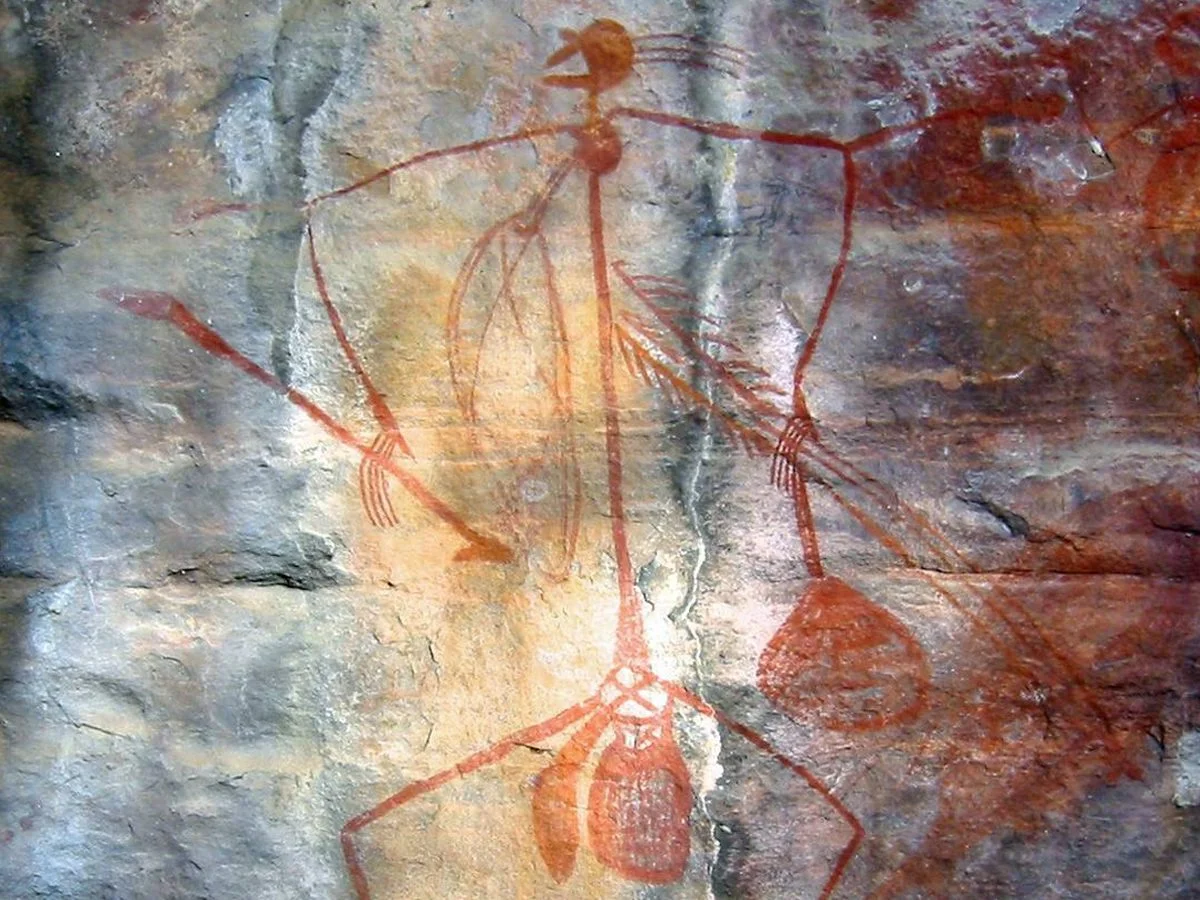
9 – Altamira Cave
The Cave of Altamira is located near the historic town of Santillana del Mar in Cantabria, Spain. It is renowned for prehistoric parietal cave art featuring charcoal drawings and polychrome paintings of contemporary local fauna and human hands.
The earliest paintings were applied during the Upper Paleolithic, around 36,000 years ago. The site was only discovered in 1868 by Modesto Cubillas.
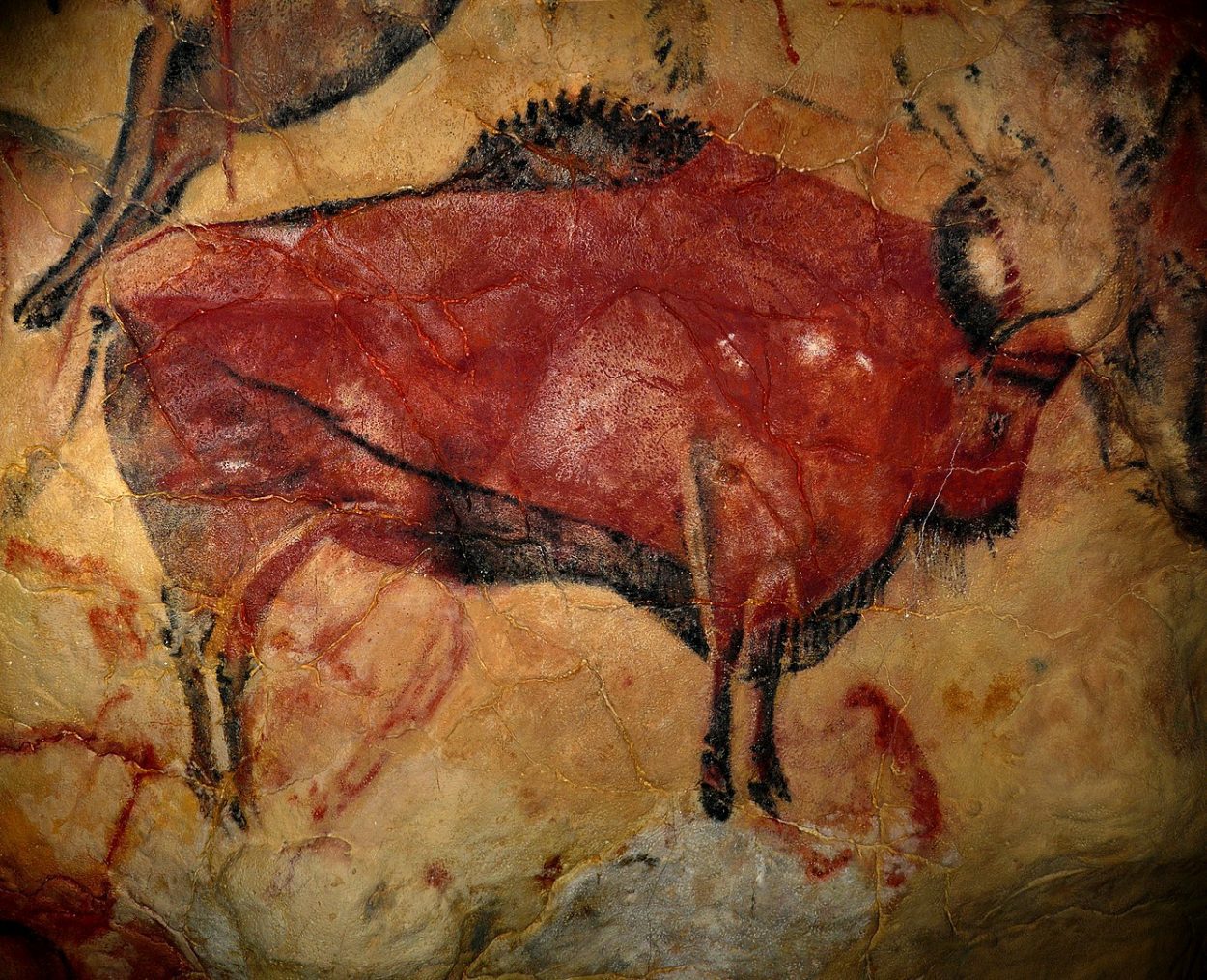
10 – Lascaux Paintings
Lascaux is the setting of a complex of caves near the village of Montignac, in the department of Dordogne in southwestern France. Over 600 parietal wall paintings cover the interior walls and ceilings of the cave.
The paintings represent primarily large animals, typical local and contemporary fauna that correspond with the fossil record of the Upper Paleolithic time. The drawings are the combined effort of many generations, and with continued debate, the age of the paintings is estimated at around 17,000 years (early Magdalenian).
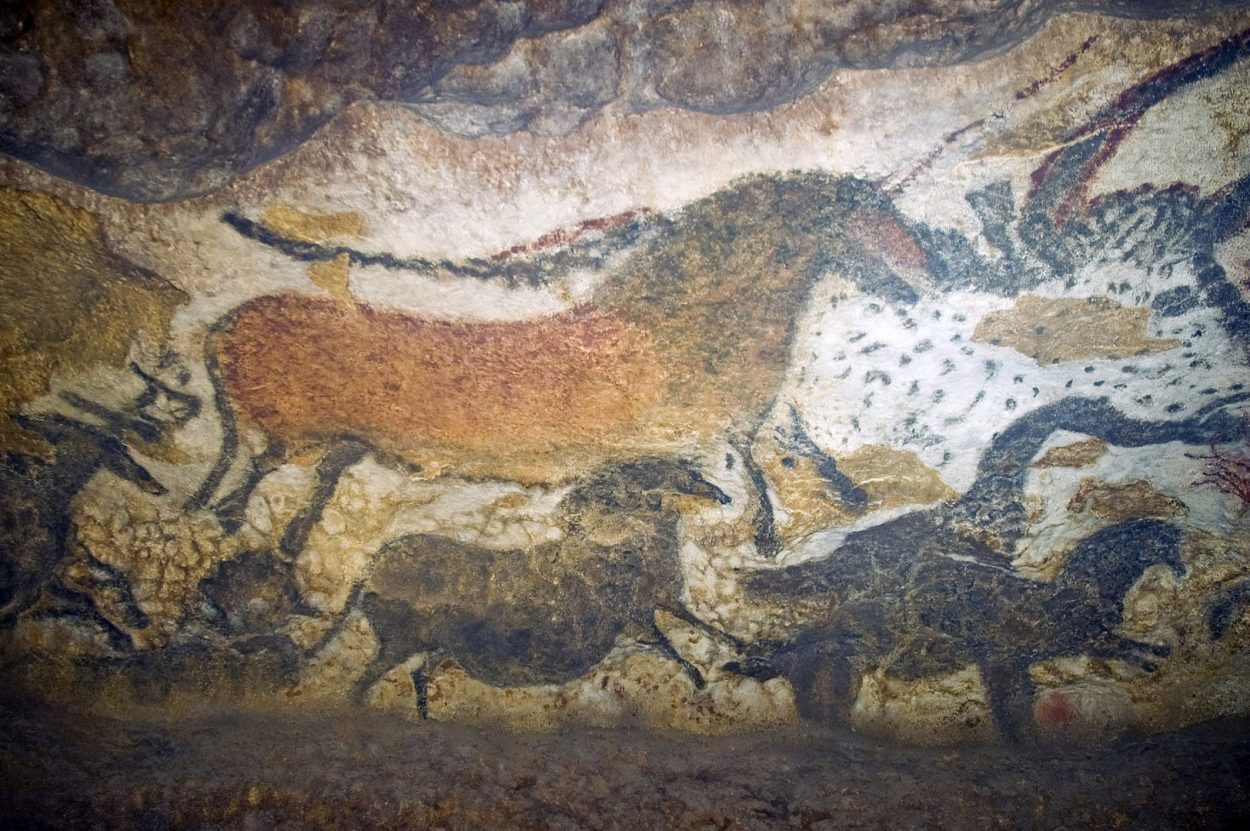
Header Image Credit : Claude Valette – CC BY-ND 2.0




